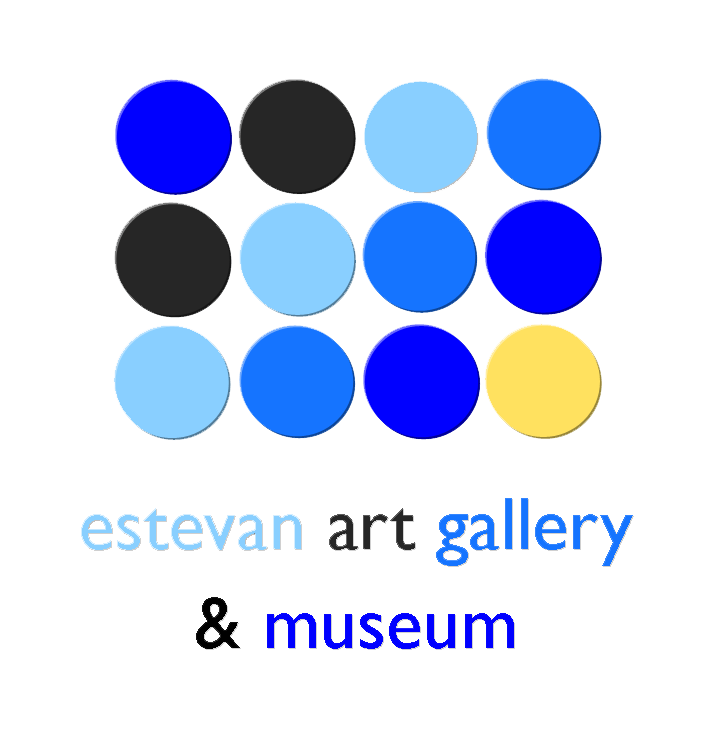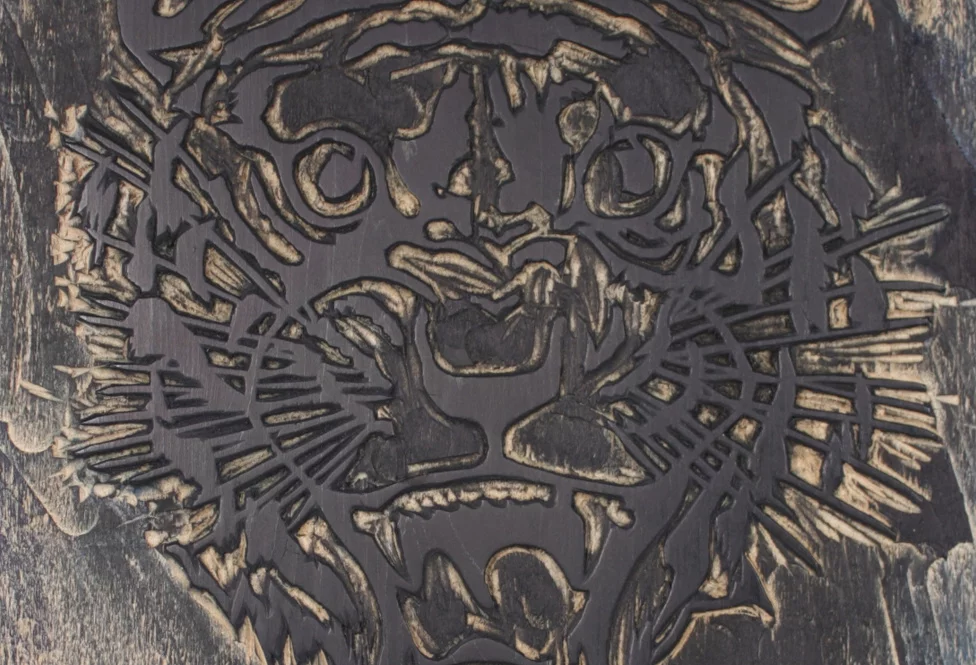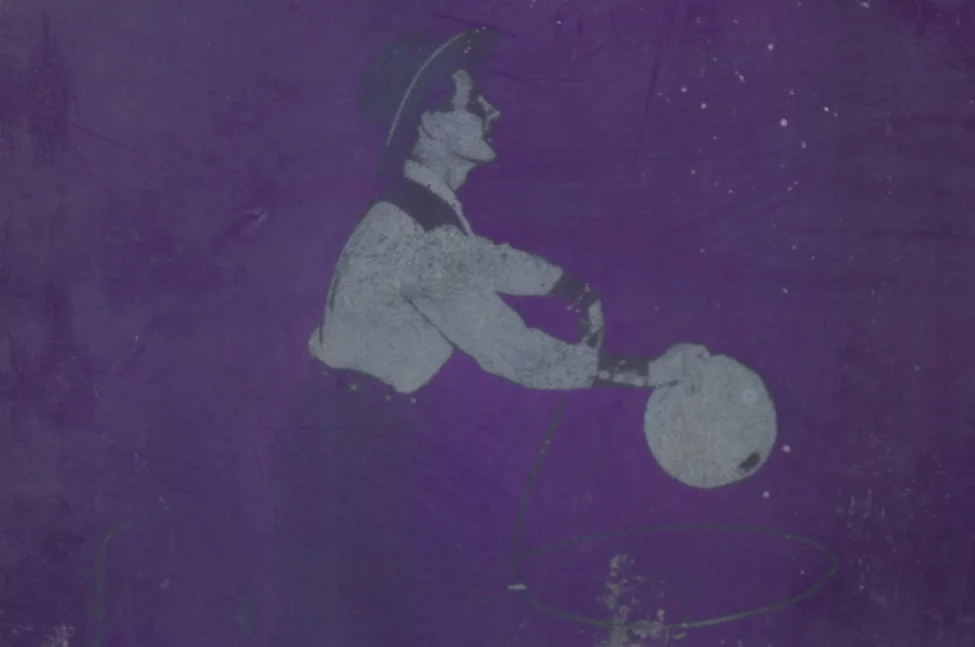Permanent Collection
Estevan Art Gallery & Museum »Detail of tiger, woodcut printing block, King Show Prints
The EAGM’s artefacts collection consists of objects that are related to the North West Mounted Police and the 1874 March West from Roche Percee to Estevan. This collection includes the historic Detachment Post. Artefacts housed in the NWMP Museum consist of: buttons from the NWMP tunics, nails found in the building and on-site, RCMP uniforms, rifles, arrowheads, riding gear, photographs and other paraphernalia related to law and order on the prairies in the 1870’s and onward. The museum building NWMP Post (located on the grounds of the EAGM, and the oldest historic Detachment Post in Saskatchewan) is an actual artefact in itself and in 1987 it was declared a Municipal Heritage Building by the City of Estevan and the Saskatchewan Municipal Government, Heritage Department. Originally, this building was located where the Boundary Dam is now (a few miles south of Estevan).
As part of the EAGM’s mandate as a gallery/museum, the collections are actively used for the advancement of life-long learning in arts, culture and heritage. Exhibiting artworks and artefacts demonstrates the EAGM’s commitment to fostering knowledge about our local and regional history, art education, art history and the art practices of Saskatchewan artists, to enable visitors to gain an understanding and appreciation of Saskatchewan and Canadian art.
Detail of cowboy, lithographic printing plate, King Show Prints
Andrew King was born in Winnipeg, Manitoba in 1885. An avid reader, he appreciated all aspects of books, from their ability to act as a form of escapism to the vast knowledge they held. What he admired most of all out of his family’s collection of reading materials were the lithographic prints found in the Bible and the typeset (font) used throughout all written copy.
As a young apprentice at the The Souris Plaindealer, King was able to learn the craft of newspaper printing. Very much like today, working in a smaller rural location afforded King the ability to learn all aspects of the business from setting type to operating the printing presses. He was encouraged to study typography in his mid- to late teens and eventually ventured back to Winnipeg to experience the larger urban context and to join the typographical union. King loved the atmosphere of small-town Prairies and enjoyed the simplicity of rural living. When The Elgin Banner came up for sale, 19-year-old King purchased the printing plant, and moved to Elgin, Manitoba. He would run The Elgin Banner from 1905 to 1909. His next adventure would take him to Rouleau, Saskatchewan where he purchased The Rouleau Enterprise in 1909.
It was a chance encounter in Rouleau in 1912 that would change King’s life, his business, and his legacy:
An advance agent of the theatrical company arrived in town to book the public hall and post advertising matter announcing its appearance.
His coming, along with his immediate troubles, created the beginning of a unique business with a continent-wide scope and reputation. That business became more than a lusty partner to the little weekly newspaper I was then publishing.
…The agent’s posters were three days late in arriving. During that time, he was in and out of my office several times a day, trying to cool off his impatience and no doubt appreciating the little bit of show talk I could carry on.
He wondered why there was not a poster printing plant somewhere in that part of Canada from which a prompt and convenient service could be obtained.
Jestingly, I said: “What about starting one here?”
He thought for a moment and said, “why not.”
I suddenly had a lot of ideas in opposition to my own suggestion, the main one being that Rouleau was but a small town sitting out on the wide-open prairie. He retaliated with reasons sound enough to nullify my objections and finished up by pointing out that so long as a poster plant was located at a place which had a good train service, that was the main consideration. Anyway, most showmen never visited the plant which produced their posters.
Andrew King, Pen, Paper and Printing Ink (Saskatoon: Western Producer Prairie Books, 1970), 77.
In 1912, King opened Enterprise Show Print, a show poster printing plant that was a companion business to The Rouleau Enterprise. Clients were attracted to King’s plant, the only one of its kind in Canada that could do large format printing on multiple sheets. He had the largest wood block letters in Canada, some standing seven feet. Theses block prints, composed of multiple sheets of paper, needed at least two sheets just for the lettering alone. This large-scale form of advertisement would cover barns, abandoned buildings, or buildings with large windowless sides viewable from the street. The purpose of this was to advertise and be seen from the furthest distance possible. As King’s notoriety grew for both his range in scale and style of posters he could produce the more his business flourished.
Two years after launching his new enterprise Andrew King began using wood blocks to create his posters. Before that he would have used the lithographic process, whereupon images are adhered to a stone surface. Switching over to wood became King’s claim to fame as he was the only commercial printer in Canada to use the wood block printing process. Ironically, King’s legacy was cemented when he switched from lithography, a process invented not even a century before his birth, to a form of printing that had been around for thousands of years.
Although King was the predominant carver and craftsman of the wood block carving process, he did not do many of the original drawings. As he was not trained as an artist, he would often commission other commercial artists for the drawings. However, it takes considerable talent to make eye-catching posters without actually using line or detail. The economy of line, particularly when creating posters for the larger scale to be read from afar, is a craft in and of itself and something that King’s posters are synonymous with. King found the perfect fit with Herb Ashley, a part-time commercial artist. Ashley would create large drawings or watercolours and submit these to King. Upon receiving the artwork, King would trace the various components of the image into groupings of objects that would be the same colour.
Posters by King Show Prints
On January 01, 1958 both businesses were purchased by The Liverpool Daily Post and Echo Ltd., and became The Estevan Mercury Limited. Although after negotiations the newspaper and commercial aspects of the business were still run by the family, the golden age of show poster printing ended with the sale of the business. The production of the large billboard posters and plates could no longer compete with their faster-paced contemporaries of television and radio.
Perhaps the greatest honour, as a writer, printmaker and general book enthusiast was the installation of selected works, chisels and wood blocks in Massey College at the University Toronto in a space named “King’s Corner”. At the age of 96 in 1981, King would pass away, leaving behind a rich legacy of visual importance.
-Excerpt from Amber Andersen, Andrew King: Welcome to the Circus (Estevan: Estevan Art Gallery & Museum, 2012)
The Estevan Art Gallery & Museum thanks the following organizations for their support:



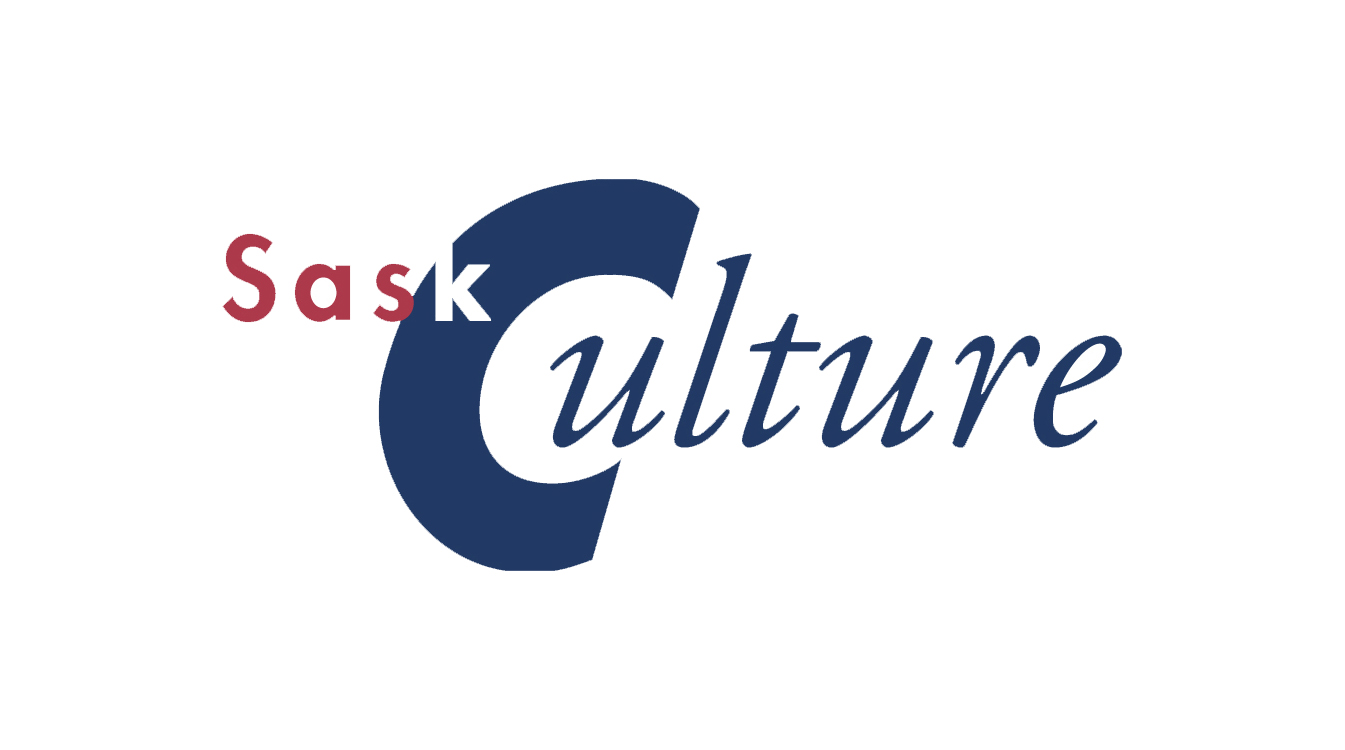
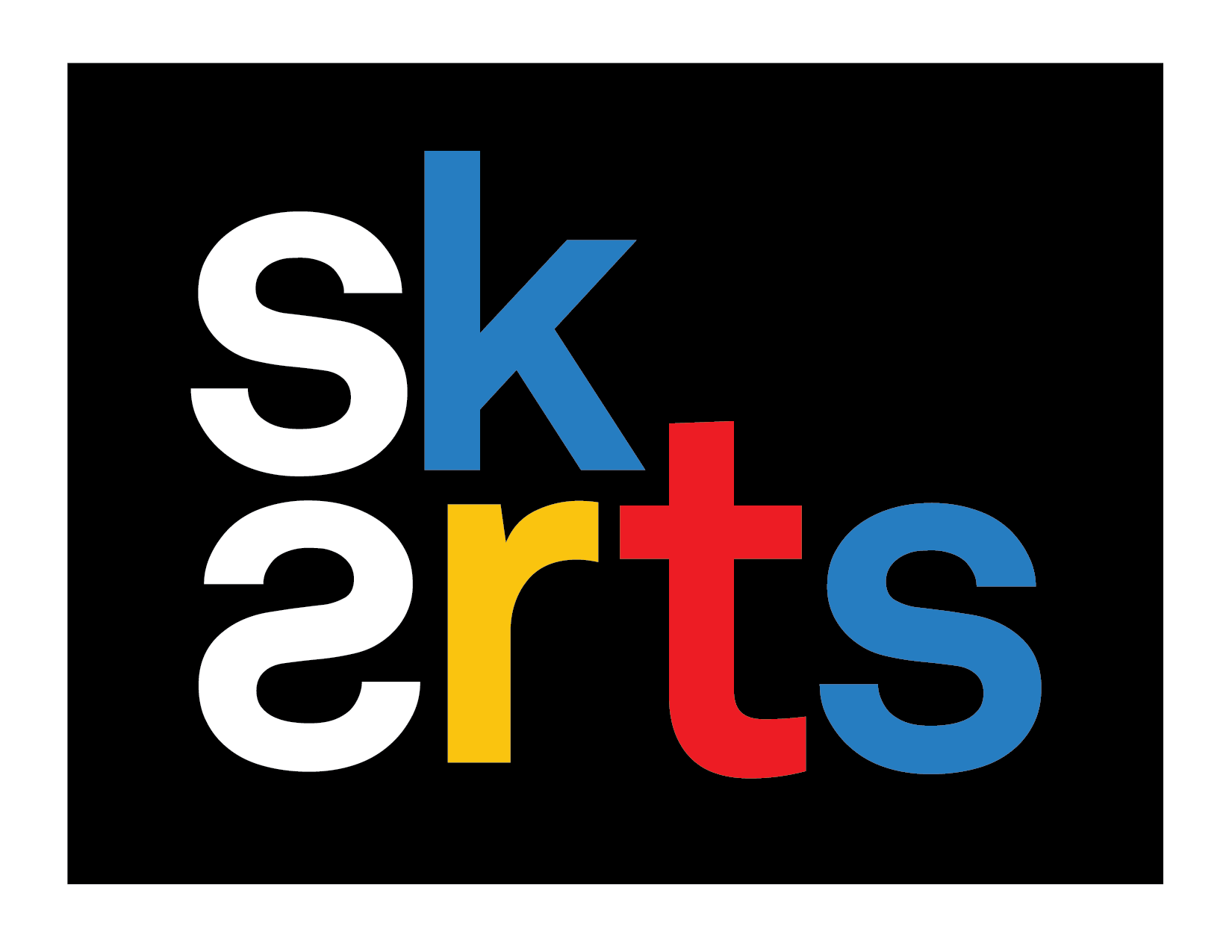





Get In Touch!
"*" indicates required fields
Hours of Operation
Monday- Friday: Open 10am-6pm
Closed for lunch day from 12-1pm.
Closed Saturday & Sundays and stat holidays.
2025 Holiday Hours: Closed December 23, 2024- January 3, 2025.
